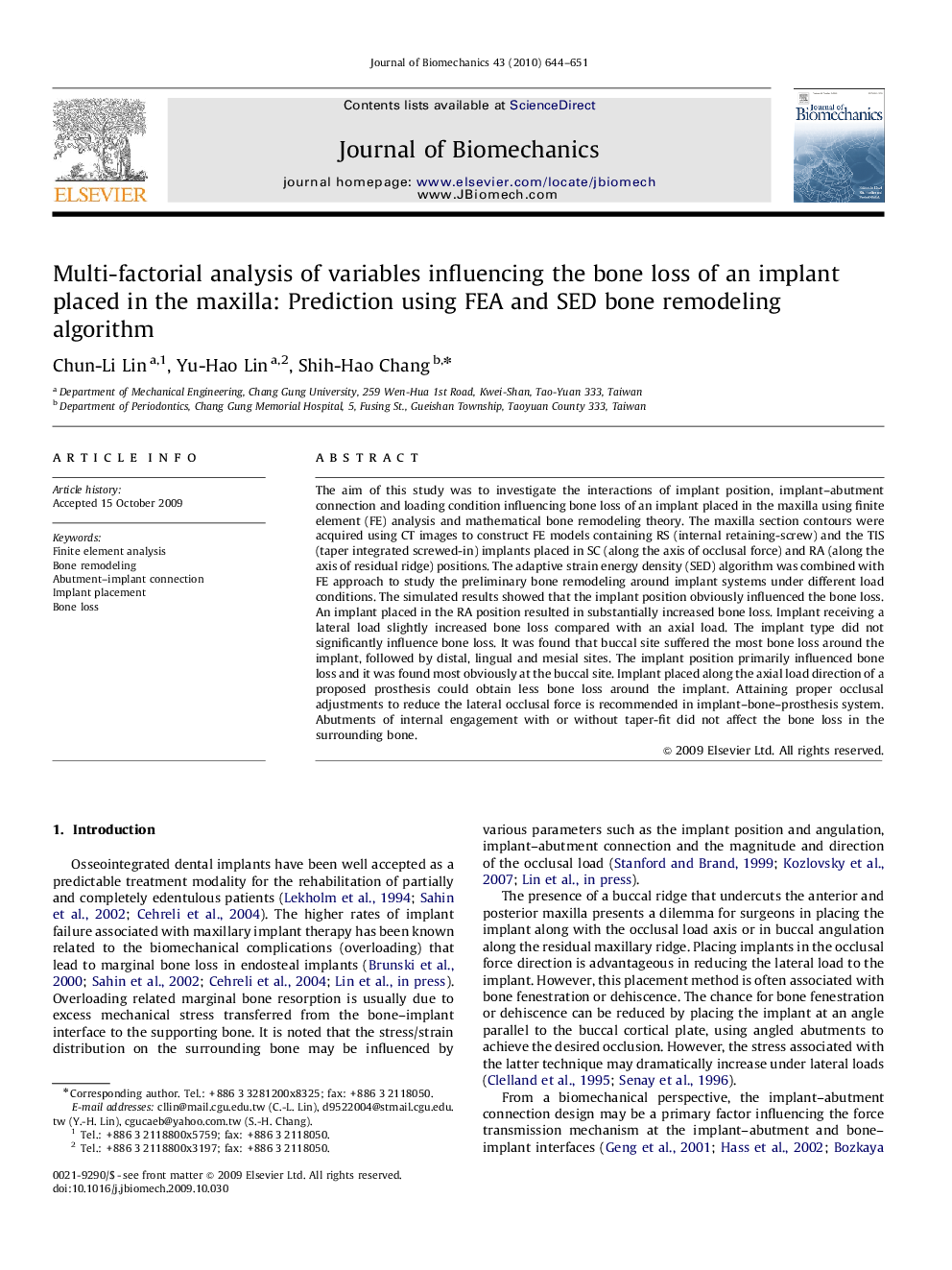| Article ID | Journal | Published Year | Pages | File Type |
|---|---|---|---|---|
| 10433462 | Journal of Biomechanics | 2010 | 8 Pages |
Abstract
The aim of this study was to investigate the interactions of implant position, implant-abutment connection and loading condition influencing bone loss of an implant placed in the maxilla using finite element (FE) analysis and mathematical bone remodeling theory. The maxilla section contours were acquired using CT images to construct FE models containing RS (internal retaining-screw) and the TIS (taper integrated screwed-in) implants placed in SC (along the axis of occlusal force) and RA (along the axis of residual ridge) positions. The adaptive strain energy density (SED) algorithm was combined with FE approach to study the preliminary bone remodeling around implant systems under different load conditions. The simulated results showed that the implant position obviously influenced the bone loss. An implant placed in the RA position resulted in substantially increased bone loss. Implant receiving a lateral load slightly increased bone loss compared with an axial load. The implant type did not significantly influence bone loss. It was found that buccal site suffered the most bone loss around the implant, followed by distal, lingual and mesial sites. The implant position primarily influenced bone loss and it was found most obviously at the buccal site. Implant placed along the axial load direction of a proposed prosthesis could obtain less bone loss around the implant. Attaining proper occlusal adjustments to reduce the lateral occlusal force is recommended in implant-bone-prosthesis system. Abutments of internal engagement with or without taper-fit did not affect the bone loss in the surrounding bone.
Related Topics
Physical Sciences and Engineering
Engineering
Biomedical Engineering
Authors
Chun-Li Lin, Yu-Hao Lin, Shih-Hao Chang,
